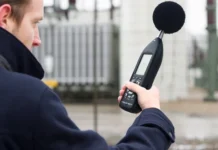The idea of crop steering is popular among cannabis cultivators. Even though some growers know about crop steering, many different groups are just now learning the technique. Unfortunately, since it is a newer concept, there is not much information on the topic. However, there are some concepts of crop steering to introduce you to in order to learn how it is appropriately done. Here are a few strategies industry experts use for crop steering.
What is Crop Steering
As a reaction to environmental challenges, cannabis plants have hormonal systems that govern their growth. Cannabis crop steering uses these hormone responses to accomplish the desired result, such as higher yields, by controlling their environment.
Vegetative growth occurs when a plant devotes the majority of its energy to the production of leaves rather than blossom creation. A plant is in generative development when its sole focus is on creating flowers.
Crop steering requires maintenance for optimum plant balance, which is crucial. The plant is either focused on leaf and stem development or bloom production during the stages of its life cycle. But, if the plant spends excessive time in just one of these phases, its growth becomes skewed.
What is Vegetative Growth
When the plant’s energy and development focus on the stems and leaves, it is called vegetative growth. Be mindful that mild growing conditions are best at stimulating strong leaves. Additionally, electrical conductivity, reduced vapor pressure deficit, higher water content, and lower light intensity are the ideal conditions for vegetative development.
Although cannabis vegetative development is commonly linked to the period between the flowering and cloning stage, these vegetative cues can nudge plants back into vegetative growth at any point during their lifespan. For example, if you have compact, slow-growing plants, encourage vegetative development and extend it out using climatic and irrigation signals.
What is Generative Growth
The plant’s energy devotes its attention to the flower formation during the generative growth phase. And, as the plant slows its growth, new foliage reduces its stretching.
In contrast, moderate conditions encourage vegetative development. At the same time, summer-like conditions lay the foundation for generative cues. Higher light intensity, lower water content, higher EC, and VPD are strategies that encourage crop development.
There are generative cues leveraged during your plant’s life, not just during the flowering stage. For example, plants in your vegetative room might demonstrate signs of excessive growth. Luckily, when this happens, you can adjust the climate and steer your plant’s growth in the right direction.
What is the Best Time to Crop Steer
Fortunately, crop steering is done at any stage during the process to help you achieve your goals. For several years now, growers have been experimenting with the process of vegetation and generative growth to enhance certain aspects. These experiments help maintain the proper plant balance.
These are just a few ways to dig deeper to understand the process of crop steering. These steps let you know the ideal ways to grow your plants along with the proper cropping method for the best results.



































































